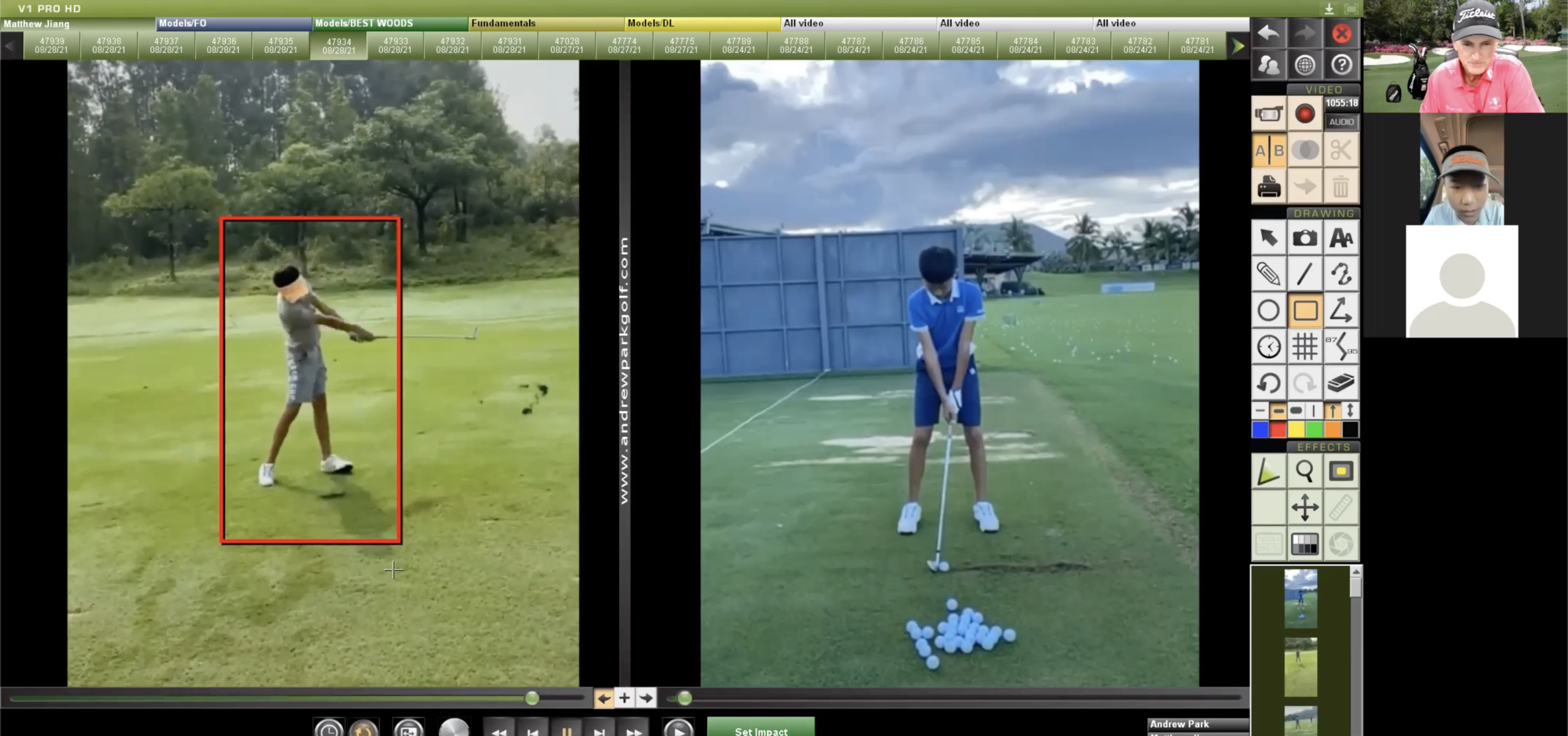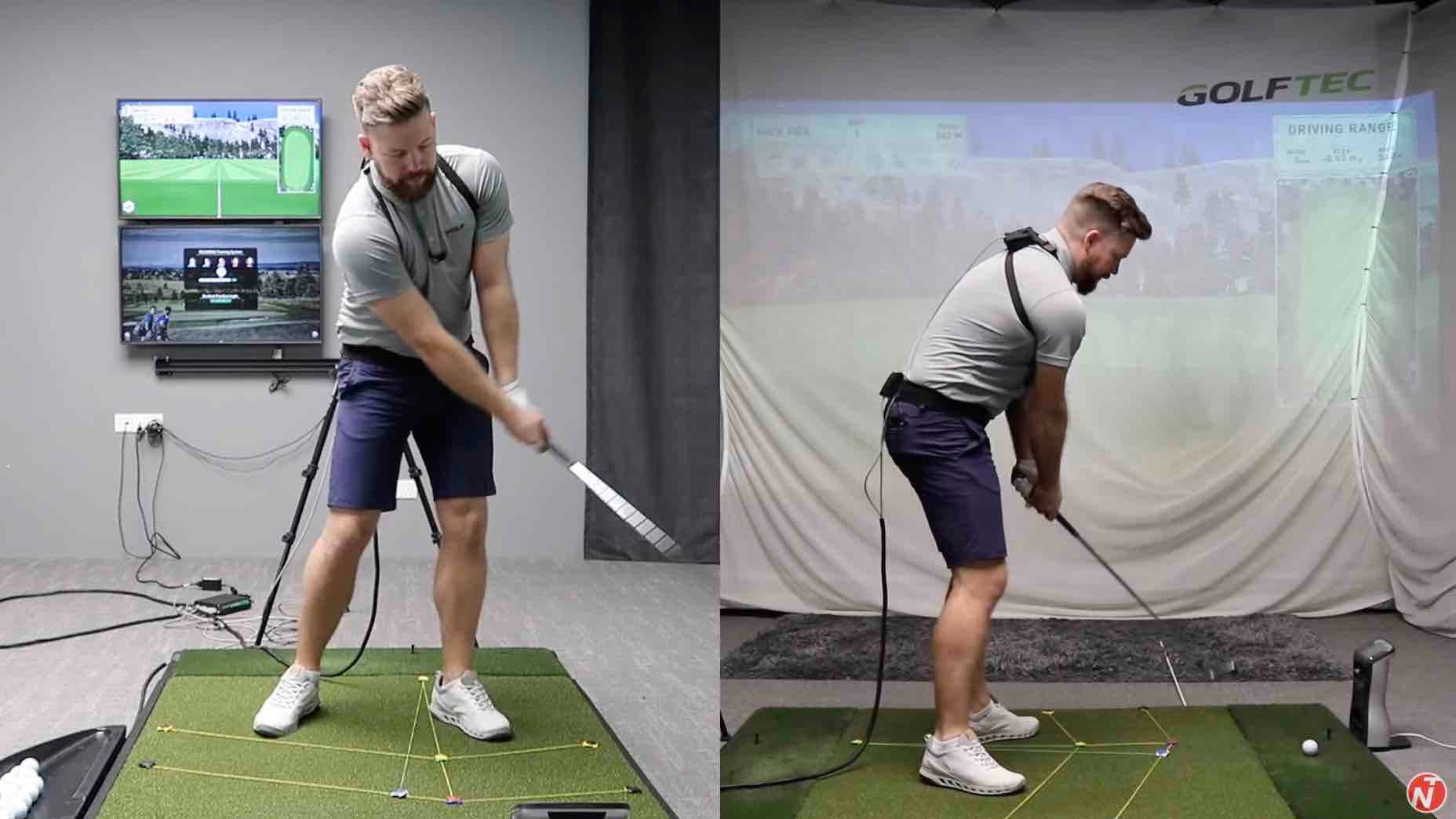Even after years of working closely with tour players, elite amateurs and juniors around the globe, as a coach, it’s always a rush to see kids who might become “the next great players” emerge.
I met Matthew Jiang (reigning titleholder of the IMG Academy Junior World Championships and member of the Chinese National Junior Golf Team) a couple of years ago in Beijing and we ended up working a lot together at my academy at Orange County National Golf Club. But when the pandemic hit in early 2020 and he had to return with his family to China. We weren’t sure what was going to happen next. But since then, something surprisng happened: thanks to union of two indispensable technologies: The V1 Golf app for students and the user-friendly, ubiquitous meeting platform, Zoom, we’re actually working more frequently than ever — even from 7,500 miles away
We’re on Zoom and V1 together two to three times per week for a live lesson and we’ve made a number of great breakthroughs as a result.
How this easy drill helped these 3 golfers eliminate their chicken wingsBy: Luke Kerr-Dineen
Fix the fundamentals first
When we first started working together, Matthew was 10 years old and had a lot of the classic earmarks of a young player looking for ways to hit the ball powerfully: An overly strong grip, an inside-to-out swing path, and too much rotation in his hands. These are all common traits in junior golfers who may not yet have the upper body strength to manage the weight of the club, so instead they drop the club to the inside, spin their hips, and throw it out the the right.
Once we got him into a more neutral grip and getting the club to come more down the line vs. in-to-out, we worked a lot on creating a more efficient body motion and a more optimal 3-to-1 tempo (in which the backswing takes three times as long as the downswing). His backswing was a little more languid in the beginning, closer to 4-to-1.
Step drill for better sequencing

We have used the Step Drill frequently to orient Matthew into the correct sequencing and firing of his hips. We talk about how soccer players kick a ball. They step, then they turn and rotate naturally. When Matthew is halfway through his backswing, say, to the nine o’clock position with his arms, he steps forward and his feet are together. That improved his timing. He never came over the top and he was always down on plane. When a player is sequencing properly, the arms follow your body and everything shallows out and times up nicely.
Now, Matthew understands more about his body motion and weight shift – if he shifts too much into the lead toe on the downswing, he’ll have a draw bias and if he shifts straight into his heel, he’ll have a fade bias because he’s spinning too soon. When he first started, he had skinny legs and a desire for more power. We had to be sure he kept the weight on the inside of his right foot so he wouldn’t wobble to the outside of that foot on the way back. Now, you can see he shifts nicely from the inside of the right foot 9and into the left toe without his left knee getting stuck in a knock-kneed position. He’s shifting his weight and using the ground and his hips brilliantly now. and as you can see, his swing looks incredibly streamlined.
Don’t be a range rat
Matthew sends me face-on and down-the-line videos of his swings from the golf course so we can factor in lie and wind conditions, ball flight and shot results to basically approximate an actual playing lesson. The progress in his overall game, including course management and shot-making, has been astounding. But it’s all about being able to keep those changes when it counts. That means taking video not just on the range, but on the course, so you can see how those changes hold-up under tournament pressure, or in different conditions.

Junior golfers need to learn how to hit every kind of shot, and that means having an understanding of how to control the clubface. We’ve even dialed in the subtleties of his pre-shot routine. If I see him look to the target three times instead of his usual two, I ask him where the ball went and it’s usually offline from the intended target. Then we go back to Tiger’s pre-shot routine and he sees those two looks back to the target he’s trying to emulate, and even time down the half-second, and he’s back on track.
To train at an elite level – or even reach your goal of breaking 90, 80 or par – takes dedication to every phase of the game. Take a page out of Matthew Ziang’s book and build your game from the ground-up.
Andrew Park is the owner of Andrew Park Golf and Andrew Park Junior Development. A GOLF Magazine Top 100 instructor, Andrew coaches numerous PGA, LPGA, and elite amateur and junior players from around the world. He is the former Director of Instruction for the David Leadbetter Golf Academies Worldwide.
Want to overhaul your bag for 2021? Find a fitting location near you at GOLF’s affiliate company True Spec Golf.


